Indus River
The Indus River is a cross-border river of Asia and a trans-Himalayan river of South and Central Asia. The 3,120 km of the Indus River arises in the mountains northeast of Mount Kailash in Western Tibet, moving northwest disputed state of Kashmir, curving sharply to the left after Nanga Parbat Massif, and moving South by Southwest through Pakistan before evacuating into the Arabian Sea near the Karachi Port. It is one of the most well-known rivers in Pakistan.
Background
The Main cities of the Indus Valley Civilization, such as Harrapa and Moen Jo Daro, trace back to around 3300 BC and represent some of the biggest known Human habitancy of ancient times. The Indus Valley Civilization expanded across northeast Afghanistan to Pakistan and Northwest India with an upward reach from east of the Jhelum River to Ropar on the Upper Sutlej. The accommodation on the coastal side expanded from Sutkagan Dor on Pakistan, Iran border to Kutch in modern Gujrat, India.
Location
The Indus River appears in Tibet and goes along with a twisting route southward through the Himalayas mountains to the Arabian Sea, evacuating into the ocean southeast of the coastal city of Karachi.
Geography of the Indus River
The Indus River arises in the southwestern Tibet Autonomous China region near Lake Mapam, with an altitude of about 18,000 feet (5,500 meters). It moves northwest for about 200 miles ( 320 km ), passing through the southeastern borders of the disputed state of Kashmir at about 15,000 feet ( 4,600 meters).
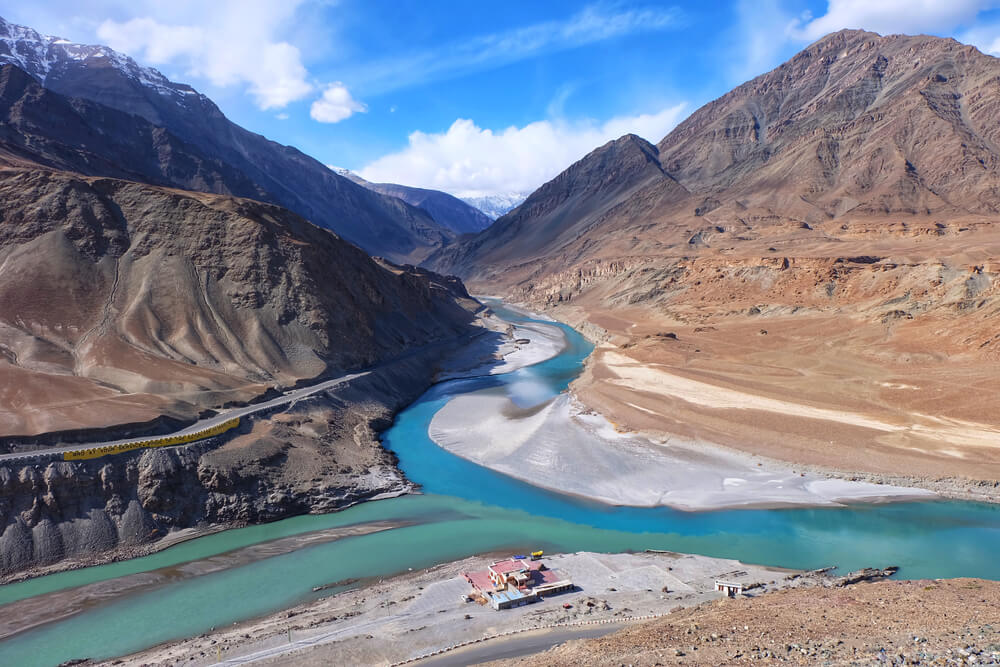
Tributaries of the Indus River
Below is the detail of the tributaries of the Indus River.
Gar River
The headwater of the Indus River is the Gar River, located in the Ngari Prefecture, Tibet, China. It amalgamates with another tributary to form the Indus River near the Tashigang village.
Gilgit River
Gilgit River flows through the Gupis Yasin, Khizer, and the Gilgit district of Gilgit Baltistan and is also a tributary of the Indus river.
Gomal River
The Gomal River flows in Afghanistan and Pakistan. It appears in north Afghanistan’s Paktika Province. It merges with the Indus river 20 miles south of Dera Ismail Khan, Khyber Pakhtunkhwa. The length of the Gomal River is 400 km ( 250 mi ).
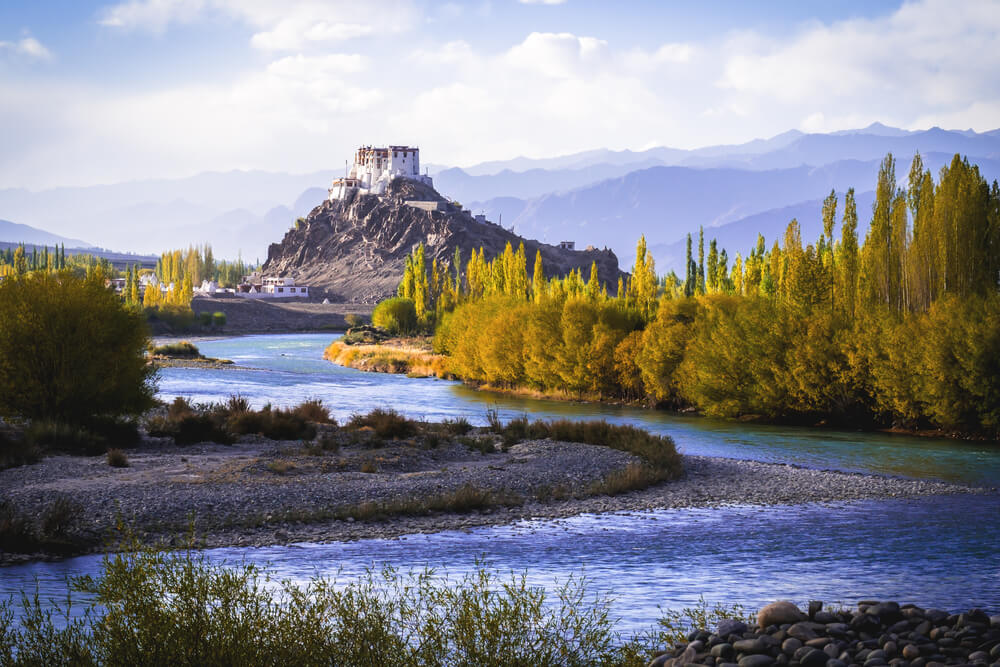
Hunza River
The main river of Hunza, Gilgit Baltistan ,Pakistan is the Hunza River . This Hunza river merges with the Gilgit and Naltar rivers before it flows into the Indus River.
Kabul River
The Kabul river is also a tributary of the Indus River. The Kabul River evacuates into the Indus River near Attock, Pakistan. The length of the Kabul river is 700 km ( 430 mi).
Kunar River
The Kunar river is a tributary of the Kabul and Indus rivers.
Kurram River
The Kurram River is also a tributary of the Indus River and merges with the Indus River at the place called Isa Khel.
Panjnad River
The Panjand means Five Rivers. The Panjnad River is formed by amalgamating five rivers: Jhelum, Ravi, Sutlej, Chenab, and Beas. This combined stream joined the Indus River at the place of Mithankot.
Chenab River
The Chenab River flows through Jammu and Kashmir, India, into the plains of Punjab, Pakistan, before finally flowing into the Indus River.
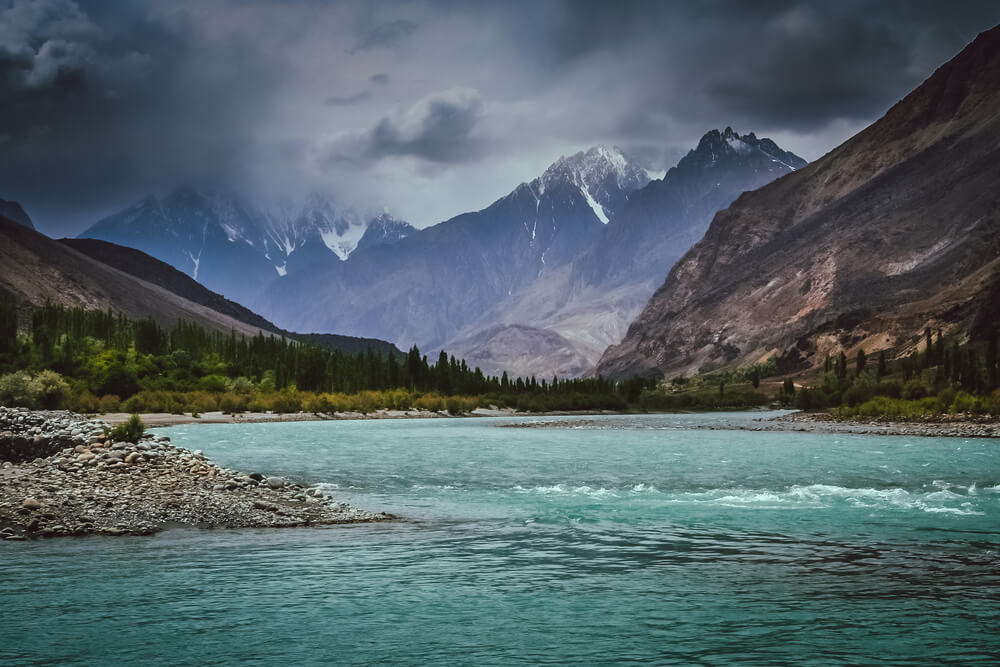
Jhelum River
The Jhelum River is a tributary of the Chenab and Indus Rivers. The total length of the Jhelum River tributary is 725 km.
Ravi River
The River Ravi is a transboundary river between India and Pakistan and is an essential part of the Indus River Basin and makes headwater of the Indus Basin. The River Ravi water evacuates into the Arabian sea ( Indian Ocean ) by the source of the Indus River in Pakistan.
Sutlej River
The Sutlej River is the longest river among the five Rivers of Punjab. It is the easternmost tributary of the Indus River.
Beas River
Beas River is one of the five tributaries of the River Indus due, to which Punjab is entitled.
Shyok River
The Shyok River is a Tributary of the Indus River that passes through northern Ladakh and reaches Gilgit Baltistan, expanding approx—550 km.
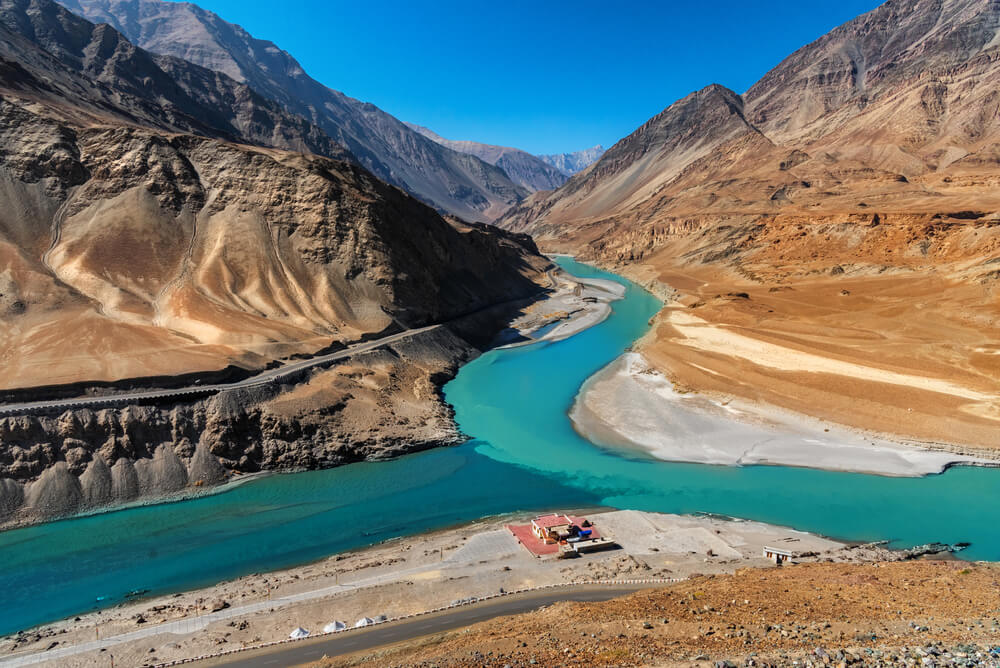
Soan River
After reaching the Kalabagh proposed dam site near Pirpiyahi, the Soan River is evacuated into the Indus River.
Suru River
The Suru River is a tributary of the Indus River that moves primarily through the Kargil district of Ladakh, India.
Swat River
The Swat River is the Tributary of the Kabul River, which in turn is a tributary of the Indus River.
Zanskar River
The Zanskar River is the first main tributary of the Indus River, as massive as the main river, which flows entirely within Ladakh, India.
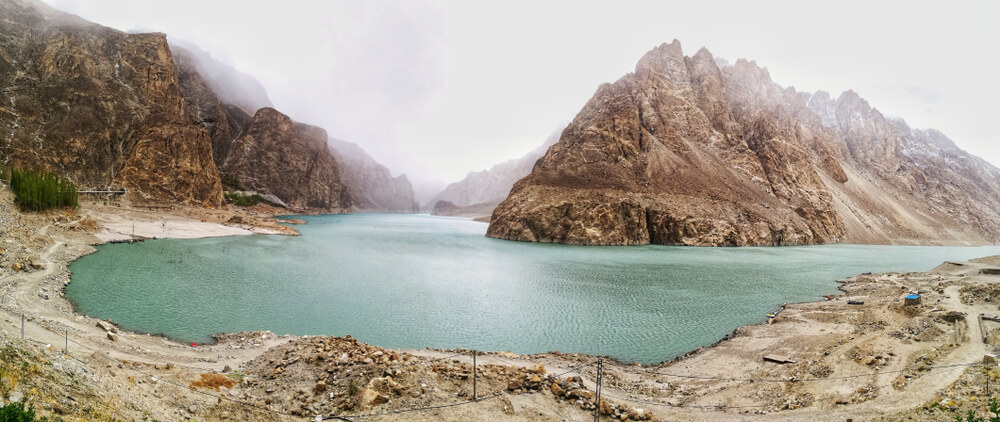
Zhob River
Zhob River is the tributary of the Gomal River, which merges near Khajuri Kach. It was built as part of the Indus Basin River.
Major Dams and Barrages on the Indus River
Below is the detail of the Dams and Barrages of the Indus River.
Tarbela Dam
The Tarbela Dam is an earth-filled dam along the Indus River in Khyber Pakhtunkhwa, Pakistan.
KalaBagh Dam
The Kalabagh Dam is a projected hydroelectric dam on the Indus River at Kalabagh in the district of Punjab, Pakistan.
Dasu Dam
The Dasu Dam is a vast hydroelectric gravity dam presently under construction on the Indus River close to the Dasu in Kohistan, province of Khyber Pakhtunkhwa, Pakistan. Pakistan Water and Power Development Authority build this dam as an essential element of the company’s Water Vision.
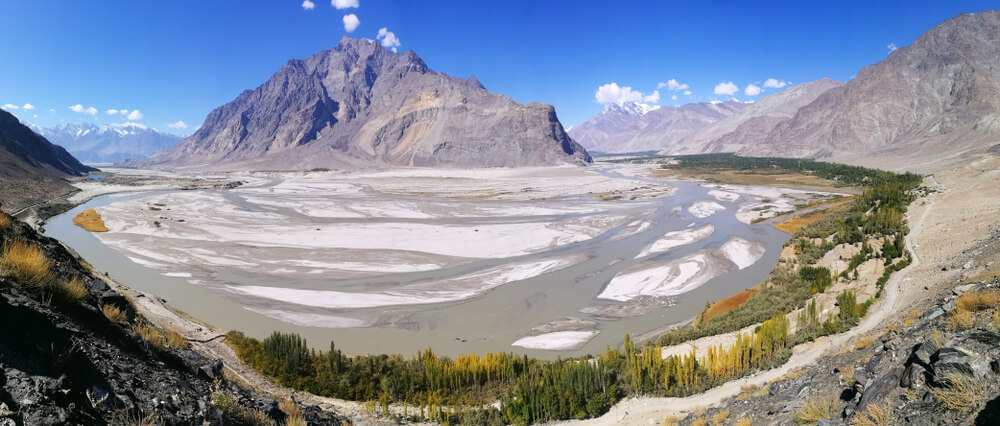
Bunji Dam
Bunji Dam is a proposed massive hydropower project on the Indus River in Bunji, Gilgit Baltistan. Bunji Dam will be the second largest hydropower project in Pakistan if built.
Barrages on the Indus River
There are six barrages built on the Indus River.
Chashma Barrage
The Chashma Barrage is located on the Indus River in the district of Mianwali in Punjab, Pakistan. It exists 304 km Northwest of Lahore and 56 km downstream of Jinnah Barrage. The contract for the Chashma Barrage project was assigned on 10 February 1967 to French Consortium Societe Dumez and Societe Borie and was accomplished on 25 March 1971. The total cost applied to this project was Rs. 399 million, but power generation began later in 2001. The capacity of the installed power station is 184 MW, from eight Kaplan-type bulb turbine units, with 23 MW Capacity each.
Guddu Barrage
Guddu Barrage is the Barrage on the Indus River close to Kashmore in the province of Sindh, Pakistan. President Iskander Mirza laid down the Foundation for this Guudu Barrage on 2 February 1957. The construction of this Barrage was completed in 1962 with a total cost of 474.8 million rupees. Field Marshal Ayub Khan inaugurated it in 1962. This Guddu Barrage aims to control flow in the River Indus for irrigation and to control floods.
Jinnah Barrage
The Jinnah Barrage is located on the Indus River close to Kalabagh. Jinnah Barrage is part of the Thal project, which supports 770,000 ha ( 1,900,000 acres ) of irrigation in the Sindh Sagar Doab east of the Indus. This Barrage was constructed between 1939 and 1946.
Kotri Barrage
Another name for Kotri Barrage is Ghulam Muhammad Barrage. This Barrage is located on the Indus River between Jamshoro and Hyderabad in the province of Sindh, Pakistan. The Barrage was accomplished in 1955, and Ghulam Muhammad inaugurated it. The Purpose of this Barrage is to control water flow in the Indus River for irrigation and to control floods. The discharge capacity of Kotri Barrage is 24,800 cubic meters per second (875,000 cu ft /s).
Sukkur Barrage
Sukkur Barrage is a barrage on the River Indus near the city of Sukkur in the province of Sindh, Pakistan. The Barrage was constructed during British Rule from 1923 to 1932 and was entitled Lloyd Barrage. Sukkur Barrage is the most extensive single irrigation network of its kind and is also a pride in Pakistan’s irrigation system.
Taunsa Barrage
The Head Taunsa Barrage is a barrage on the River Indus in Taunsa, Dera Ghazi Khan district, Punjab province, Pakistan. It is located 20 km (12 miles) southeast of Taunsa Sharif and 16 km ( 9.9 ) from Kot Addu. This Barrage aims to control water flow in the River Indus for irrigation and to control floods.
Climatic Conditions of the Indus River
Across the Indus Basin, the Maximum average temperature is about 30 degrees centigrade and 13 degrees centigrade in winter. The minimum Temperature (Average) ranges from 18 degrees centigrade in summer to -0.3 degrees centigrade in winter. The coldest month of the Indus River is January, and the warmest month is June.
Tourist Picnic Spots on the Indus River
Below is the detail of the Tourist spots on the Indus River.
Al Manzar Picnic Point
It is the Picnic point near the Indus River. People from Hyderabad and Jamshoro mostly visit this place with their friends and families. Fish is the famous dish of this place which visitors enjoy.
Gorakh Hill Station
This Hill station is a fascinating place and exists at an altitude of 5,688 ft ( 1,734 meters ) above sea level is generally entitled as “Murree of the Sindh.” It is situated in the heart of Sindh in Dadu District.
Keenjhar Lake
Keenjhar Lake, also known as Kalri Lake, is located in Sindh. It is Pakistan’s second-largest freshwater lake, with an area of 134 km2.
Mohenjo Daro
Mohenjo Daro city is a well-known UNESCO World Heritage Site in Sindh.
Shah Jehan Mosque
The Shah Jehan Mosque is one of the region’s most splendid relics of the Mughal period.
Sehwan Sharif
Sehwan Sharif, one of the most famous tourist attractions, is home to the shrine of Lal Shahbaz Qalandar, a prominent Saint, Sufi, and poet.
Kirthar National Park
Kirthar National Park was established in 1974 and is Pakistan’s second-largest reserve for wildlife species.
Thar Desert
It is a beautiful desert located in Sindh and a tourist attraction place.
Shrine of Shah Abdul Latif Bhittai
The Shah Abdul Latif Bhittai shrine is an 18 century Sufi shrine in Pakistan in the province of Sindh.
Sukkur Barrage
Sukkur Barrage is located on the Indus River. It was initially known as Lloyd Barrage and was built during British rule in the early 1900s.
Shrine of Sachal Sarmast
Sachal Sarmast was a famous Sindhi Sufi Poet, and their shrine at Sindh is the most visited and attractive tourist destination.
Economical Impact on the Indus River
The Indus River supplies essential water resources for the economy of Pakistan, especially the breadbasket of Punjab province, which is considered for most of the nation’s agricultural production and Sindh. The Indus River provides water needed by Pakistan to develop and flourish. Indus River provides water to many heavy industries and a safe-to-drink ( edible) water supply in Pakistan. Thus Indus river played an important role in developing Pakistan’s economy.
Interesting facts about the Indus River
1- The Indus River is one of the most significant and extensive rivers, and it is located in three countries, China, India, and Pakistan.
2- The Indus River flows for about 1,976 miles. Different smaller tributaries nourish it during its way.
3- The River Indus Basin is the largest in the world and covers an area of 11,65,000 square km and a total length of 2,880 km.
Importance of the Indus River ( Indus River Pakistan )
- The Indus River is Pakistan’s primary water source for drinking purposes.
- The Indus River water is used for domestic, heavy industrial, and agricultural needs for cultivating crops.
- The Indus River originates from the region of Himalaya near Mansarovar Lake and then merges with the Arabian sea near Karachi city.
- The Indus River is the most extensive river that aids a lot to stand Pakistan’s economy firm.
- The Length of the Indus River is 3,180 km.
FAQS
What is the Length of the Indus River?
The Length of the Indus River is 3,180 km.
What country owns the Indus River?
India and Pakistan are two countries that own the Indus River by signing the Indus Water Treaty of 1960 brokered by the World Bank.
Which river is called the Father of River?
The Indus River is known as the Father of River in Pakistan.
Conclusion
The Indus River has great significance as it provides significant resources for the economy of Pakistan, especially the breadbasket of Punjab and Sindh province. The Indus River also supplies vast water to heavy industries and edible water to a large state region. Thus Indus River is the backbone of food production and agriculture in Pakistan.
